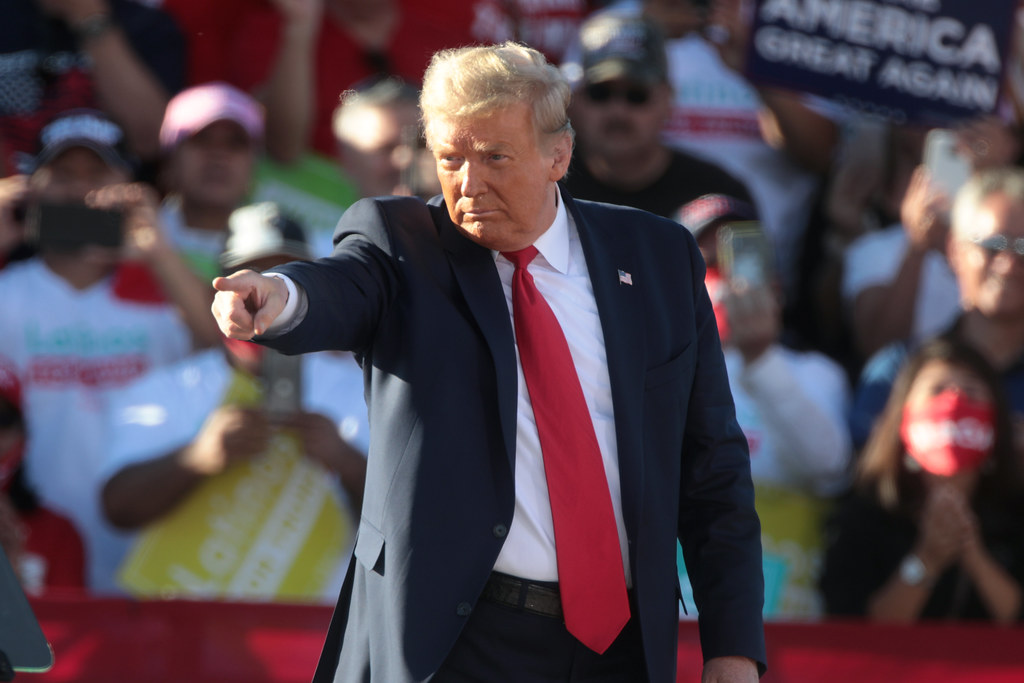Yesterday, the Senate acquitted Donald Trump of inciting the Capitol riot on 6 Jan. Although seven Republicans joined the Democrats to vote 'guilty', this was short of the two-thirds majority required to find Trump guilty. Despite a furious speech attacking the ex-president, Senate Minority Leader Mitch McConnell also voted to acquit. As explained in this article (published last month by our US comrades), the GOP is divided from top to bottom between MAGA true believers, opportunists looking to ride Trump's coattails, and career politicians intimidated by his reactionary voter base. The future of a cornerstone of the bourgeois political system hangs in the balance.
Trump’s dramatic rise and personal gravity papered over the profound rifts that had been growing in the Republican Party in the runup to 2016. In the chaotic wake of the riot at the US Capitol on January 6, these divisions have come roaring back with a vengeance. The schism was on full display from the moment the riot started. As if to symbolize the dynamic within the party, the fleeing Republican Senator Mitt Romney spoke to a reporter about “what the president has caused today, this insurrection.” For his part, Trump watched the events unfold on television, waiting for hours before posting a video on social media, in which he expressed his love for the rioters and tepidly told them they had “to go home now.”
It was later reported that Mike Pence—rather than the Commander in Chief—had approved the order to deploy the National Guard to remove the crowds occupying the Capitol. Then, after resuming control of the building and reconvening to ratify the election, three Republican senators who were previously supportive of Trump’s efforts to overturn the election abandoned the cause. On the other side of the rift, eight Republican senators and 139 representatives voted to overturn the election results in Arizona and/or Pennsylvania, ostensibly in agreement with Trump’s baseless claims of massive voter fraud.
Senator Lindsay Graham, voting in favor of certifying Biden’s election, expressed the frustration of a layer of Republicans who had come up against their limits, stating, “Today, all I can say is count me out. Enough is enough. I tried to be helpful.” The next day, a wave of resignations by Republican officials at the White House began. On January 9, it was reported that Mike Pence and Donald Trump had not spoken since before the events on Capitol Hill.
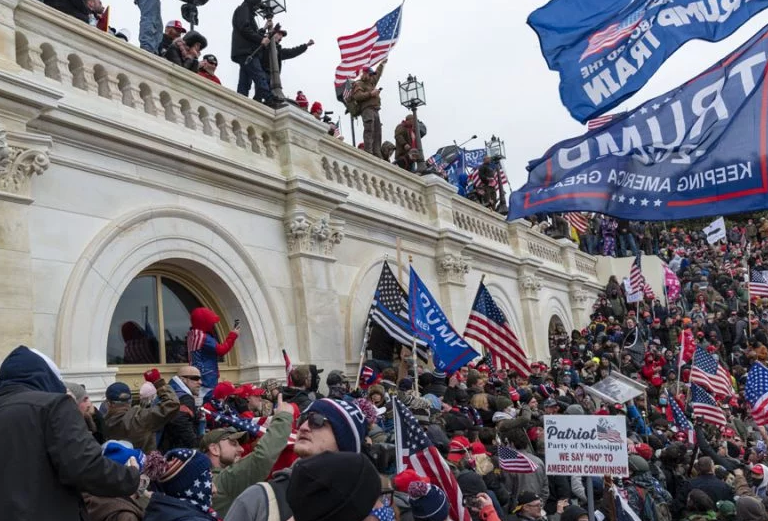
Shortly thereafter, the introduction of articles of impeachment drew another line in the sand for the Republicans. Unlike during Trump’s first impeachment in 2019, when not a single Republican representative voted against him, 10 Republicans in the House of Representatives voted to impeach. This included Liz Cheney of Wyoming, the third-highest-ranking GOP House representative, and daughter of the former vice president. In a subtler but still significant show of disapproval for the former president’s recklessness, four additional Republican representatives abstained. Also, unlike in 2019, Republican House leaders chose not to formally lobby members to vote against impeachment this time around.
For his part, former Senate Majority Leader Mitch McConnell has indicated that he is open to voting in favor of impeachment when the matter reaches that body and has now explicitly blamed Trump for inciting the riot—a stark departure from his tone over the past four years. Meanwhile, 80% of Republican voters say they do not hold Trump responsible for the riot, and 37% of voters believe there was widespread voter fraud in November. This is hardly the unified Republican Party of decades past—it is a portrait of a key pillar of capitalist rule in crisis, experiencing the clearest-yet expressions of divergences that have been a long time coming.
Divisions years in the making
As early as 2016, Trump began sowing doubts about the integrity of the elections. Having lost the popular vote in 2016, he nonetheless declared that he would have won there too, were it not for millions of fraudulently cast ballots. As the 2020 election drew near, he insisted that if he didn’t win, it could only be due to voter fraud. Consistent with his prior messaging, he persisted in his accusations of colossal voter fraud and pursued every possible legal and extralegal avenue to overturn the election, including asking the Georgia Secretary of State to “find” enough votes to overturn the result.
After that also failed, Trump resorted to playing with fire, organizing a rally outside the Capitol, and stoking the fury that led to the now-infamous riot. With this action, Trump crossed the line. The vast majority of the ruling class has no interest whatsoever in breaking with bourgeois democracy—at least for now—so Trump’s escapade was universally condemned.
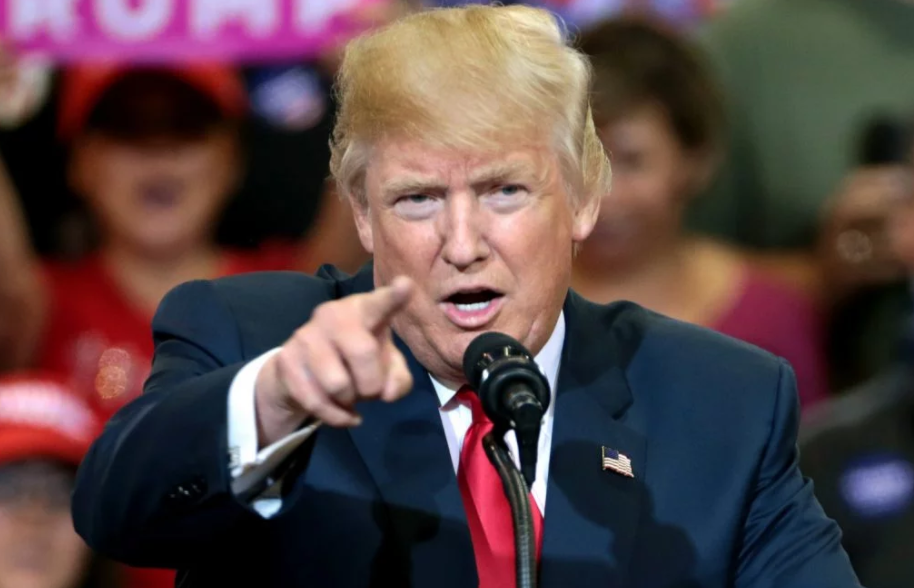
For reasons exemplified by the events on January 6, Trump was never the candidate of choice for the ruling class or their loyal servants in the establishment of the Republican Party. Reckless, unpredictable, and driven solely by self-interest and ego, he was not a reliable helmsman to guarantee the overall stability of US capitalism. At any time, a phone call or tweet could send markets spiraling downward or rocketing upward. This kind of instability is bad for business.
Trump’s base of support includes fringe reactionaries, angry small-business owners, and small sections of the ruling class. But he has also been able to cynically tap into the legitimate anger of millions of workers who have been faced with rising inequality and falling living standards, which characterize the ongoing decline of US capitalism. With the help of the undemocratic Electoral College, and with the complicity of the class-collaborationist labor leaders—who backed the establishment choice in Hillary Clinton, instead of launching a class-independent alternative—Trump won the 2016 election and began refashioning the Republican Party.
With his demagogic promises to restore the prosperity of postwar America, his finger-pointing at “elites,” and his none-too-thinly veiled racism, Trump is undoubtedly the most popular politician among Republican voters and lower-ranking officials, and the fallout from the riot has not changed this fact. On the basis of his first presidential run, he successfully broadened the base of the Republican Party, which the establishment begrudgingly accepted and tried to navigate. A tense dynamic emerged in which the politician who is by far the most disliked in the upper circles of the party is nonetheless the clear favorite among the “grassroots” of the party—and he held the highest office in the most powerful capitalist nation on earth.
For four years, the leaders of the Republican Party tried to wince through Trump’s presidency, keeping a close eye on his erratic behavior and looking for any and every opportunity to reassert control over the party. But with just weeks left in his term, Trump went too far by fanning the flames of the riot, forcing prominent Republicans to consider an open break—despite the risky short-term consequences to the party’s electability.
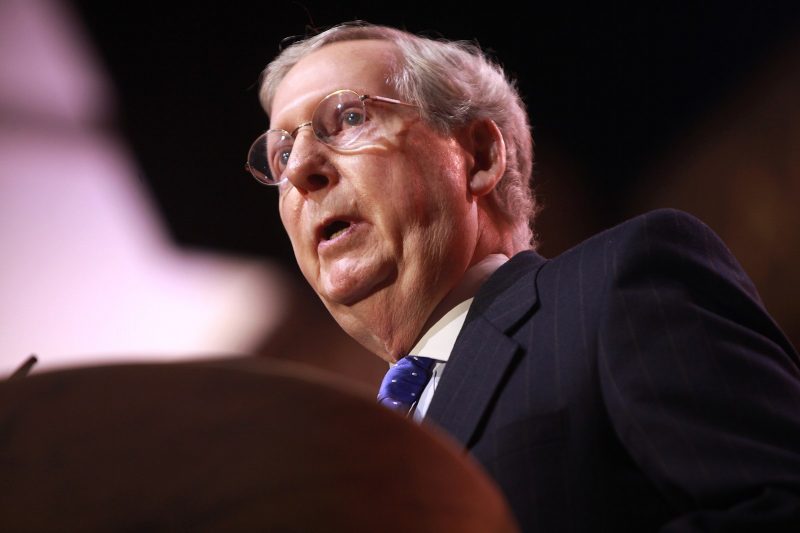 After the riot on January 6, McConnell deliberately distanced himself from Trump and blamed him for the riots, although he did eventually vote to acquit him / Image: Gage Skidmore
After the riot on January 6, McConnell deliberately distanced himself from Trump and blamed him for the riots, although he did eventually vote to acquit him / Image: Gage Skidmore
The straw that broke McConnell’s back
It is instructive to examine Mitch McConnell’s tone over the course of Trump’s presidency. As the Senate Majority Leader, he was faced with the difficult task of maintaining the appearance of party unity in an institution rife with tensions. A leading figure within the Republican Party, he sought to stay in the good graces of Trump’s base of support while asserting the interests of the establishment in all important matters.
During Trump’s first impeachment in 2019, and again in the weeks after the 2021 election, McConnell gave rhetorical support and cover to Trump. Aside from a prior disagreement with Trump on the question of postponing the 2020 election, McConnell stood by the president more or less faithfully for his entire term.
But after the courts—heavily weighted with Trump-appointed judges—unanimously rejected Trump’s efforts to contest the election, McConnell broke with the president. A lifelong bourgeois politician with a keen awareness of his role in society, when push came to shove, he voted in the interests of his class. On December 14, he accepted the Electoral College certification and instructed his caucus not to object to the results. Then on January 6, calling it the most important vote he had ever cast, he voted to certify Biden’s election, warning that overturning the results “would damage our republic forever.”
Days later, after House Democrats introduced the articles of impeachment, McConnell privately stated that he was pleased with their efforts, and later indicated that he was open to voting to convict Trump when the issue reached the Senate.
More recently, on January 19, McConnell—undoubtedly having spent the previous two weeks calculating and recalculating his response to these events—took the significant step of openly blaming Trump for the riot, stating that “The mob was fed lies. They were provoked by the president and other powerful people. And they tried to use fear and violence to stop a specific proceeding of the first branch of the federal government, which they did not like.” Trump will not easily forgive this “disloyalty.”
“Returning to form”
McConnell’s trajectory reflects the attitude of a broader layer of Republicans who see this moment as an opportunity to purge Trumpism from the party. While they may have tolerated it in the past, a majority of the establishment cannot stomach the prospect of allowing Trump’s antics any longer. And with Trump’s approval ratings at a record low during his last week in office, as well as with grounds to accuse the former president of sedition, it was as good a time as any to cut their losses and go in for the kill.
The phenomenon of Trumpism is an indication that the US capitalist class has partially lost control of one of its two political pillars—but the battle is far from over. The establishment still aims to reassert control over the party. The burgeoning effort is led by dyed-in-the-wool establishment figures such as Mitch McConnell, Liz Cheney, Mitt Romney, Senator Roy Blunt of Missouri, and Nebraska Senator Ben Sasse. Mike Pence, too, showed his establishment sensibility, dutifully refusing to give in to Trump’s pressure to overturn the election when Trump called on him—with no basis in bourgeois law—to hand the victory to his president.
Though a numerically small layer of House Republicans voted in favor of impeaching Trump, it is a significant change from his 2019 impeachment and indicative of much wider divisions behind the scenes. Without a doubt, there are more Republicans in silent agreement with this wing of the party, who will side with them as things intensify further.
The anti-Trump wing of the party also enjoys the support of the capitalist class itself. Mouthpieces such as the Chamber of Commerce and the National Association of Manufacturers expressed clear disapproval of the attempt to overturn the election, with the latter even calling on Pence to invoke the 25th amendment to remove the president from office after the Capitol riot. Likewise, dozens of companies have announced plans to withdraw financial support from politicians who opposed the certification of the election results. One group of donors has even pledged $50 million to support Republicans who come out in favor of impeachment.
Why is this? As Tim Ryan, C.E.O. of PricewaterhouseCoopers, told the New York Times, “I believe this is the best country in the world, and we can’t let all that go to hell in a handbasket. We need to stabilize. We need certainty. If we can’t come together, can’t stabilize, or if it got worse, it wouldn’t be good for business.” Also speaking to the Times, JPMorgan Chase C.E.O. Jaime Dimon commented, “No C.E.O. I know condones that in any way, shape or form. We shouldn’t have someone, you know, gassing up a mob.”
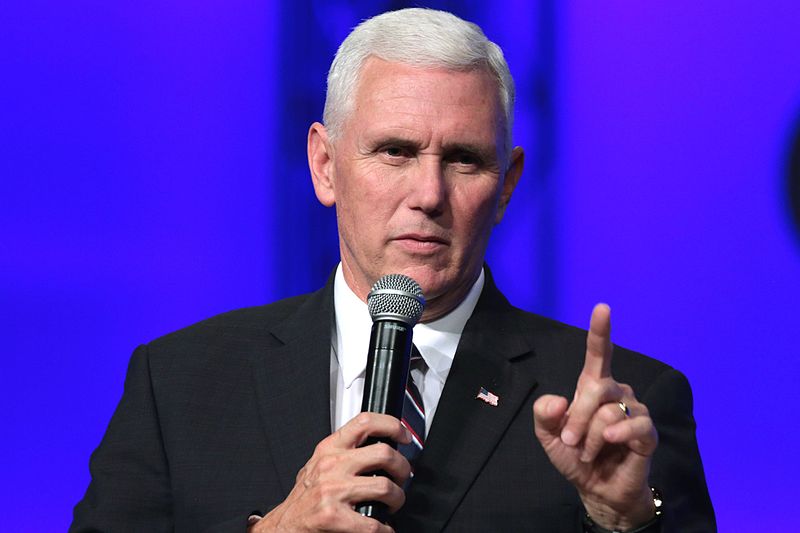 Mike Pence refused to go along with Trump’s antics and threatened to invoke the 25th amendment to remove him from office, demonstrating his loyalty to the establishment / Image: Gage Skidmore
Mike Pence refused to go along with Trump’s antics and threatened to invoke the 25th amendment to remove him from office, demonstrating his loyalty to the establishment / Image: Gage Skidmore
Trumpism without Trump?
In the context of a world-historic crisis of capitalism that is polarizing millions of people, the trajectory of the Republican Party is not solely determined by support or lack of support from the capitalists. Sensing the wave of discontent that Trump has ridden, there is also a wing of the Republicans who seek to ride the wave behind him, characterized by their economic nationalism and demagogy against “elites” and even the “ruling class.”
While this wing of the party lacks the support of the majority of the ruling class, it has the support of the Republican voter base. At the state and local level, “MAGA” is the dominant party creed. Even if Trump is impeached and barred from running for office again—a prospect that is by no means guaranteed, as conviction requires the support of two-thirds of the Senate—someone else will try to pick up the torch and fill the political vacuum. Already, prospective candidates have been lining up at the national level.
History shows that it is not so easy to replicate the particular combination of language, bravado, and timing that someone like Trump brought to the table. Nevertheless, there are always those who will give it a try. Notable in this layer are Missouri Senator Josh Hawley—the first senator to come out in opposition to certifying Biden’s election—and Texas Senator Ted Cruz, who has changed tack from his 2016 strategy of opposing Trump and now aims to ride Trump’s coattails into the presidency in the coming decade.
Following Trump’s lead, Hawley declared in November that the Republicans “are a working-class party now.” Cruz has also made cynical appeals to “blue-collar workers” and saving “union jobs” in order to justify his defense of the fossil fuel industry. The two senators—both Ivy League graduates—have calculated that taking on Trump’s mantle will help them politically.
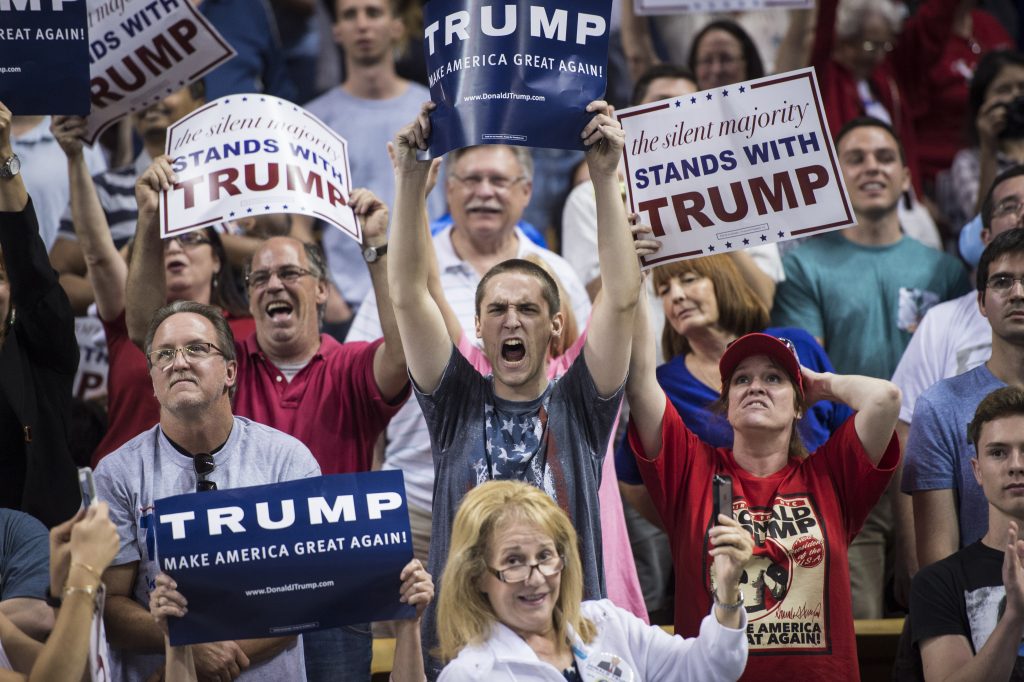 Republicans like Hawley and Cruz have attempted to make anti-establishment appeals to the working class in the hopes of riding Trump’s coattails into political victory / Image: public domain
Republicans like Hawley and Cruz have attempted to make anti-establishment appeals to the working class in the hopes of riding Trump’s coattails into political victory / Image: public domain
Also objecting to Biden’s election certification were the 139 GOP congresspeople and six other senators. But while Trump himself may believe his delusional claims that he was the rightful winner, we can be almost certain that not a single other high-ranking Republican genuinely believes that widespread election fraud tipped the balance.
As Senator Ben Sasse said on December 31 in an open letter to his constituency:
When we talk in private, I haven’t heard a single congressional Republican allege that the election results were fraudulent—not one. Instead, I hear them talk about their worries about how they will “look” to President Trump’s most ardent supporters … Let’s be clear what is happening here: We have a bunch of ambitious politicians who think there’s a quick way to tap into the president’s populist base without doing any real, long-term damage. But they’re wrong—and this issue is bigger than anyone’s personal ambitions. Adults don’t point a loaded gun at the heart of legitimate self-government.
This is the attitude of the serious representatives of capitalism. The issue is indeed bigger than personal ambitions; it is a question of the overall need to maintain public perception as to the validity of US bourgeois democracy—and in times like these, that is not a simple task.
While Trump’s firmest supporters in Congress are a numerical minority, there are many more pro-Trump Republicans across the country in state and local government. Recent events demonstrate the considerable electoral risk of being perceived as anti-Trump by this layer and by Republican voters more broadly. After voting to impeach Trump, staunch conservative Liz Cheney was fiercely criticized by the Wyoming Republican Party and the Wyoming Gun Owners Association. Additionally, after stating that Trump was responsible for the riot, House minority leader Kevin McCarthy was subjected to sharp conservative criticism, despite voting against impeaching Trump and previously voting to oppose Biden’s certification. He quickly corrected his “mistake,” stating that Trump, in fact, did not provoke the riot and expressing his “concerns” with the leadership of Liz Cheney. Out of fear of being outflanked from the right by pro-Trump primary opponents, many Republican members of Congress will be pushed even further to the right.
The blame for all of this lies squarely with the current labor leaders. A class-independent, mass socialist party would cut through the political confusion and reframe the polarization on a class basis, drawing support from workers who vote for both parties and workers who currently don’t vote at all. Since Trumpism is caused by discontent with the liberal status quo in the first place, class-independent socialist politics are the only feasible way to fight it. But by refusing to break with the Democrats, the labor leaders are complicit in allowing demagogic right-wing appeals to working-class identity to fester and continue to sow confusion and divisions in the working class.
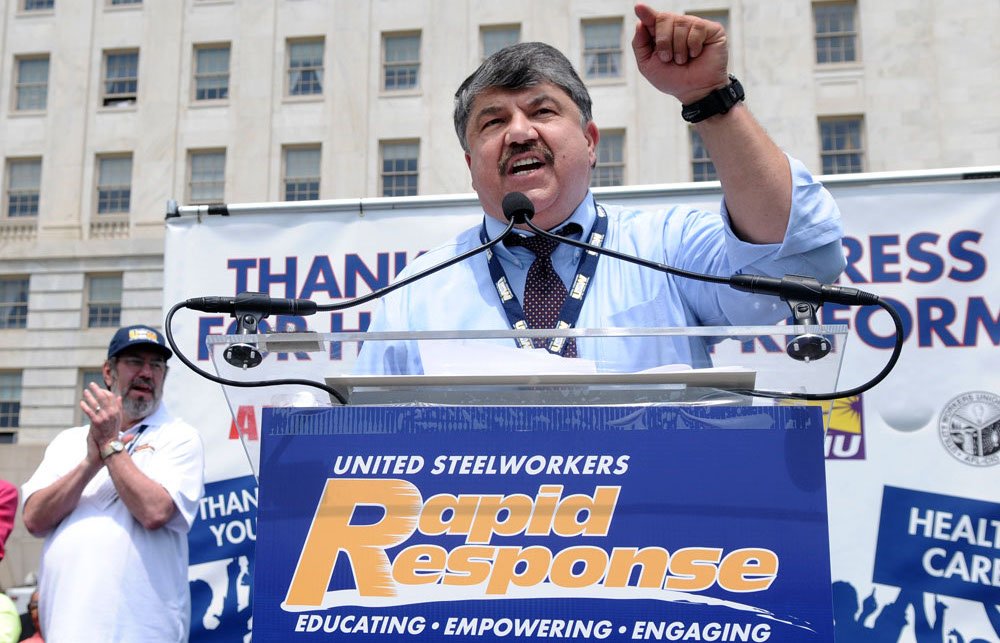 The blame for the confusion lies with the current labor leaders who refuse to put forward class-independent socialist politics that could show a way out of the crisis / Image: public domain
The blame for the confusion lies with the current labor leaders who refuse to put forward class-independent socialist politics that could show a way out of the crisis / Image: public domain
Where is the Republican Party going?
Three broad groupings have appeared within the Republican Party. On the one hand stands the establishment wing, which seeks to regain full control over the party. On the other stands the firmly pro-Trump wing. And between them, there is a wavering middle layer of Republicans who want to keep tapping into Trump’s base while softening the rough edges of Trump’s actual approach. Exemplified by people such as Tom Cotton, Marco Rubio, they strive for a “kinder, gentler” Trumpism.
In decades past, simply being the party of opposition to the Democrats in power would have been sufficient to keep the party more or less unified. But that epoch of relative capitalist stability is long over. Maintaining unity between the emerging groupings will be impossible in the long run. It is all but guaranteed that a formal split will occur at some point. In fact, Trump has privately flirted with the idea of starting a new party, to potentially be called the Patriot Party, though only time will tell whether or not he launches something along these lines.
It is impossible to predict the potential outcomes for a new right-wing party. Whether it would displace the Republicans or simply remain a fringe grouping would depend on many factors and the concrete situation in which it emerges. However, we can be sure of this: simply removing Trump will not solve the crisis facing the Republican Party and could, in fact, make it even worse. A party with a relatively large base to the right of the Republicans would inevitably siphon away a significant percentage of that party’s voter base. Given the significant anti-establishment anger among the Republican voter base, such a party could emerge whether or not Trump himself gives the lead. Whatever the exact outcome, it would certainly upend the carefully calibrated balance between the two major parties.
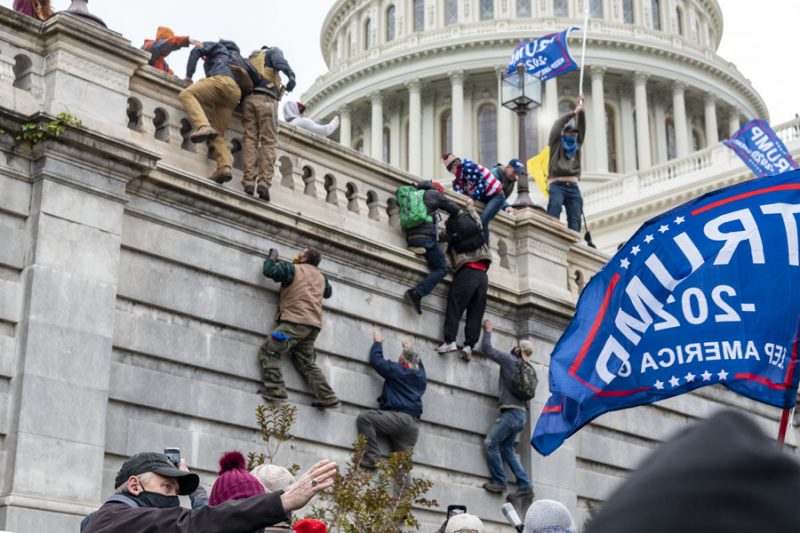 It is clear that removing Trump will not solve the crisis facing the Republican Party and could, in fact, make it worse / Image: Blink O'fanaye, Flickr
It is clear that removing Trump will not solve the crisis facing the Republican Party and could, in fact, make it worse / Image: Blink O'fanaye, Flickr
Furthermore, the rise of such a party would also provide convenient cover for the Democrats to shift ever further to the right—the so-called “center”—in order to court former Republicans and establish itself as the preeminent party of the capitalist class. Such a seismic shift in the political landscape would reveal the fragility of the two-party system—an arrangement which some on the left viewed as a permanent and insuperable barrier. The refusal of the labor leaders to launch a mass party of the working class to the left of the current duopoly has allowed Trumpism to pose as the sole reference point for anti-establishment anger. But the emergence of a new party on the far right could provide a powerful impulse for the creation of a new mass political vehicle on the left.
The recent history of the Republican Party shows that Trump is only the most recent expression of an existential crisis confronting both major parties. Decades of declining US capitalism—a factor beyond any president’s control—have eroded public confidence in the entire establishment. This is the basis for Trumpism, and consequently, there is no possibility of a lasting return to the status quo. If Trump is removed from the political sphere, it will only represent a clearing of the decks for the reactionary movement behind him to be continued in another, potentially more virulent form.
After a year of dramatic changes in the political landscape, we should not be numb to the significance of the divisions within the ranks of the Republican Party. For well over a century, the “Grand Old Party” was an apparently permanent fixture on the American political landscape, a shining example and model for the capitalists of the world. For decades, it effortlessly enjoyed a mass base of support. It is now in a prolonged death agony, subject to convulsions, crisis, and instability—like the economic system it defends. Its precise fate remains to be seen, but whether it is transformed fully into a party of Trumpism, trundles along as “Trumpism-lite,” or is displaced altogether, the glory days of the “moderate, respectable” Republican Party are dead and buried.

